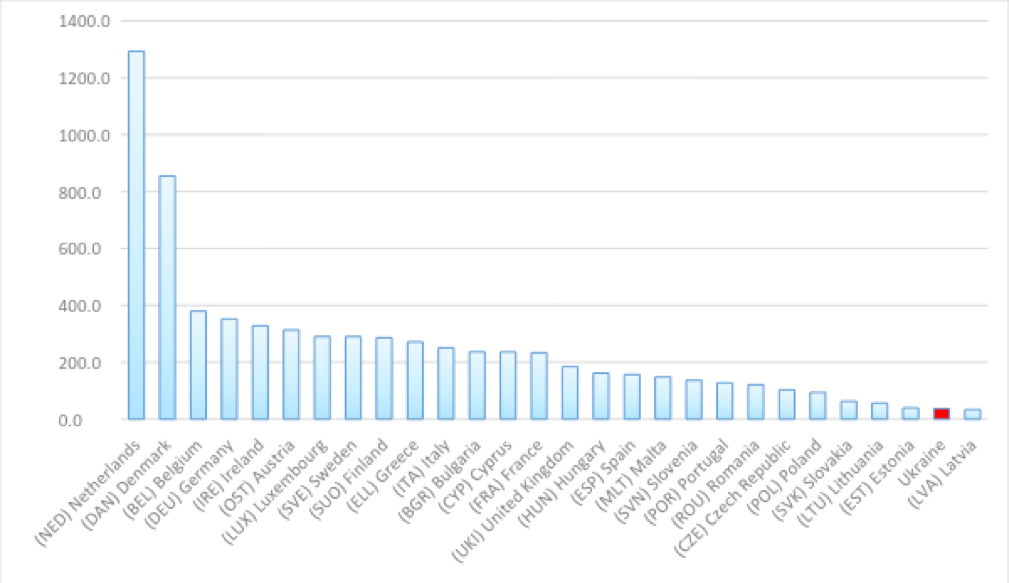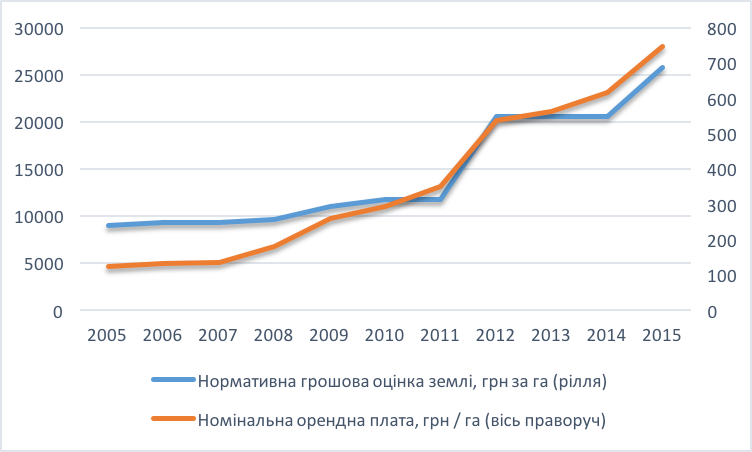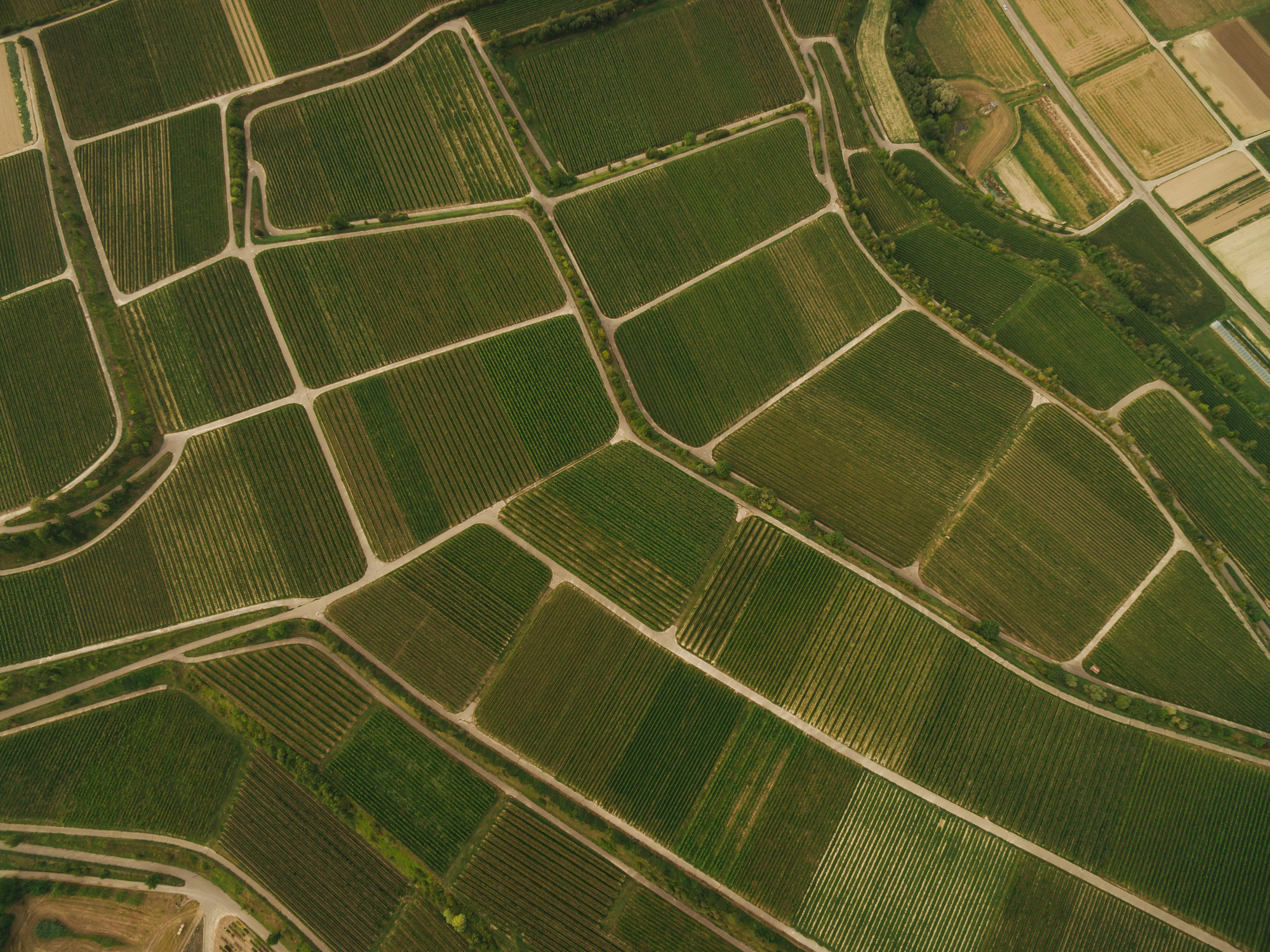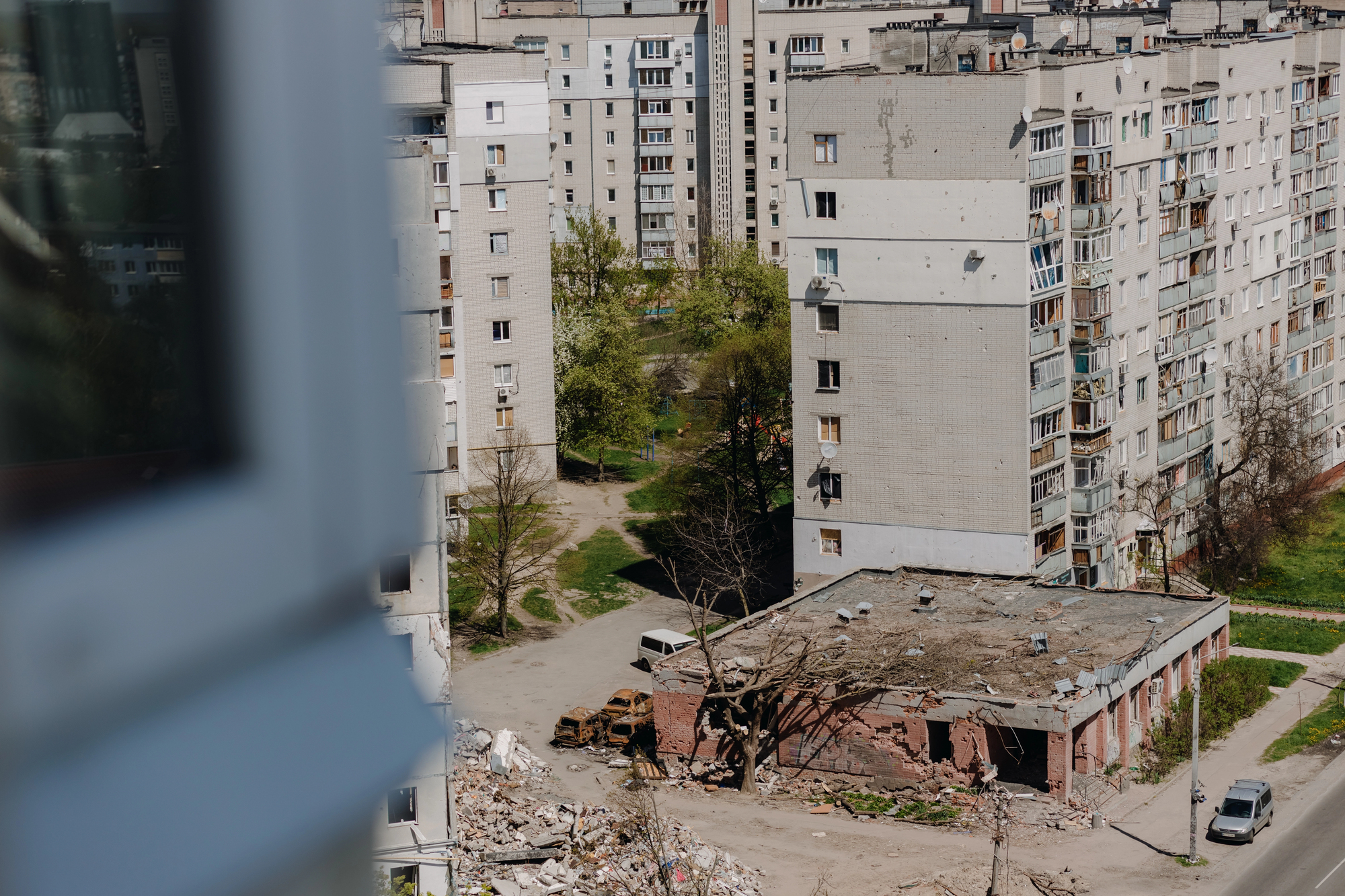Вартість оренди землі с/г призначення в Україні більш ніж в 10 разів нижча, ніж могла би бути, якби було усунені викривлення на ринках землі та інших факторів виробництва. До таких недоліків належать поганий доступ до капіталу, мораторій на продаж землі, роздрібнення земельної власності тощо. Очевидний висновок полягає в тому, що від можливості продажу землі виграли би не лише ті, хто продав би свою землю, а й ті, хто зберіг би власність.
В Україні розповсюдженим є погляд, що фермери платять надто низьку орендну плату власникам земельних ділянок сільськогосподарського призначення. Такий висновок переважно стає наслідком порівняння орендних ставок в Україні та інших (сусідніх) країнах (Рисунок 1). Більше того, такий погляд підсилюється фактом славнозвісної родючості українських чорноземів. Очікується, що вартість землі повинна відповідати її якості. Порівняння з іншими країнами, однак, не враховує нинішніх економічним умов у секторі та країні. Ми показуємо, що теперішня вартість оренди земель с/г призначення справді більш ніж в 10 разів нижча, ніж могла бути, якби ринки землі та інших факторів виробництва в Україні не потерпали від значних викривлень. До таких викривлень належать, наприклад, мораторій на продаж землі с/г призначення, роздрібнена власність землі та поганий доступ до капіталу та інші.
Рисунок 1. Вартість оренди землі с/г призначення в Україні та країнах ЄС, в євро/га
Джерело: StateGeoCadastre, Eurostat
Сприйняття вартості оренди сільськогосподарської землі в Україні
У всьому світі розмір орендних ставок визначається головним чинником прибутковістю сільського господарства. Іншими словами, динаміка орендних ставок слідує динаміці прибутків фермерів. Враховуючи, що фермери отримували порівняно непогані результати впродовж останнього десятиліття, існує очікування того, що вартість оренди с/г призначення має зростати. Вони й справді зростають (дивіться Рисунок 2). Однак, це зростання спричинене в основному підвищенням нормативної вартості землі та конкуренції за землю між виробниками.
На жаль, поки що дискусія навколо того, якими могли би бути орендні ставки в Україні за відсутності обмежень продажу землі, закінчується висловленням суб’єктивних поглядів та спекуляцій, а не на фактах. Використовуючи спрощену економічну модель та доступні дані ми показуємо, що 1) нинішні орендні ставки не відповідають економічній віддачі (ренті) землі с/г призначення та 2) наскільки нинішні орендні ставки в Україні могли би зрости за умови усунення різних перешкод та викривлень ринків.
Рисунок 2. Орендні ставки в сільському господарстві та нормативна вартість, грн/га
Джерело: презентація авторів на основі даних Держгеокадастру
Спрощена економічна модель
Спираючись на праці Ferguson et.al (2006) та Ciaian and Swinnen (2010), Nivievskyi, Nizalov and Kubakh (2016) показує, що враховуючи обмеження на ринку кредитів, гранична віддача землі є вищою за граничні витрати, пов’язані з нею. Виникає питання, наскільки значною є ця різниця?
Щоб відповісти на це запитання, ми використовуємо параметри функції виробництва в рослинництві в Україні зі статті Deininger et al (2013). Використавши дані на рівні окремих господарств, вони встановили, що в середньому 35% випуску створюється саме землею, а решта – такими факторами, як добрива, праця, пальне тощо. Таким чином, оскільки середній випуск в рослинництві в Україні становив приблизно 1300 дол. США на 1 га у 2014 році, то економічна віддача землі (економічна рента) дорівнює близько 455 дол. США/га. Ця економічна рента розподіляється між власниками земельних ділянок (у вигляді орендної плати), користувачами землі (прибуток) та державою (земельний податок або єдиний податок). Якби ринки факторів виробництва працювали нормально, вартість оренди сягала би 455 дол./га, але наразі вона становить лише 37 дол./га, що в 11 разів нижче потенційної вартості.
Реальний розподіл економічної віддачі від землі с/г призначення залежить від переговорної позиції власників землі у порівнянні з орендарями, кредитних та інших обмежень на ринках факторів виробництва та наявності альтернатив працевлаштування для власників землі. В Україні комбінація цих чинників породжує три можливі випадки:
- Земля обробляється власниками землі. Згідно із нашими розрахунками на основі даних Державного геокадастру, близько 29% сільськогосподарської землі у використанні обробляється власниками. У цьому випадку левова частка економічної ренти належить власнику, а маленька частка передається державі у вигляді земельного або єдиного податку. Проте в Україні існує досить невелике число господарств, які працюють на власній землі, оскільки власникам бракує доступу до капіталу, спроможності працювати на землі (біля 50% власників – похилого віку) або вони працевлаштовані в інших секторах економіки. Крім того, максимально можливий розмір ділянки на сім’ю досить невеликий, а тому неможливо скористатись економією масштабу.
- Земля у приватній власності винаймається комерційними господарствами. Близько 60% сільськогосподарської землі у користуванні обробляється орендаторами, що винаймають землю у індивідуальних власників. Із середнім орендним платежем, що у 2015 році становив 37 дол. (дані Державного геокадастру), виробники утримують решту економічної ренти в якості прибутку і сплачують податок у вигляді або земельного, або єдиного податку. Відносно низьку орендну плату власникам можна деякою мірою пояснити порівняно слабкою переговорною позицією власників землі, оскільки власність на землю дуже роздрібнена і багато власників не мають можливості самим її обробляти. І ще одна причина низьких орендних ставок пов’язана із високими витратами на укладання та переукладання договрів оренди та із слабким захистом прав користувачів землі.
- Земля у державній та комунальній власності орендується комерційними фермами. Майже 9% землі с/г призначення обробляється користувачами, що винаймають цю землю у державних або місцевих органів влади. Ще 2% передано у постійне користування. Середній орендний платіж у 2015 році складав близько 64 дол. США (Держгеокадастр), що перевищує розмір платежу за оренду землі у приватній власності. Основною причиною цієї різниці є те, що земельні наділи є великими і орендуються на тривалий період часу. Проте цей рівень орендної плати також може бути вищим, якщо земля орендується у конкурентний та прозорий спосіб (наприклад, через аукціон).
Таким чином, ми показали, що вартість оренди землі с/г призначення в Україні більш ніж в 10 разів нижча, ніж могла би бути, якби було усунені викривлення на ринках землі та інших факторів виробництва. До таких недоліків належать поганий доступ до капіталу, мораторій на продаж землі, роздрібнення земельної власності тощо. Очевидний висновок полягає в тому, що від можливості продажу землі виграли би не лише ті, хто продав би свою землю, а й ті, хто зберіг би власність. Більш важливим є те, що передача землі більш ефективним користувачам підвищить продуктивність господарств та підвищить економічну віддачу від землі, оскільки неефективні власники та користувачі землі залишать сектор. Щоб скористатися цими можливостями, країна повинна відкрити ринок купівлі та продажу землі с/г призначення та покращити доступ агровиробників до капіталу.
Використана література
[1] Ciaian, P., d. Kancs and J. Swinnen (2010), EU Land Markets and the Common Agricultural Policy, CEPS Paperback, CEPS, Brussels.
[2] Deininger, Klaus, Denys Nizalov and Sudhir Singh (2013), Are mega-farms the future of global agriculture? Exploring the farm size-productivity relationship for large commercial farms in Ukraine – World Bank Policy Research working paper WPS 6544/ KSE working paper, http://go.worldbank.org/A5D4SB2IU0
[3] Ferguson, S., Furtan, H., & Carlberg, J. (2006). The political economy of farmland ownership regulations and land prices. Agricultural Economics, 35, 59–65. /doi/10.1111/j.1574-0862.2006.00139.x/full
[4] Nivievskyi, Oleg, Denys Nizalov and Sergei Kubakh (2016). Restrictions on farmland sales markets: a survey of international experience and lessons for Ukraine, Capacity Development for Evidence-Based Land & Agricultural Policy Making in Ukraine Project (available at http://land.kse.org.ua)
Ця публікація створена спільно проектами «Підтримка реформ у сільському господарстві та земельних відносинах в Україні» та “Ціна держави” (http://cost.ua/). Інфографіка доступна тут.
Застереження
Автори не є співробітниками, не консультують, не володіють акціями та не отримують фінансування від жодної компанії чи організації, яка б мала користь від цієї статті, а також жодним чином з ними не пов’язаний






